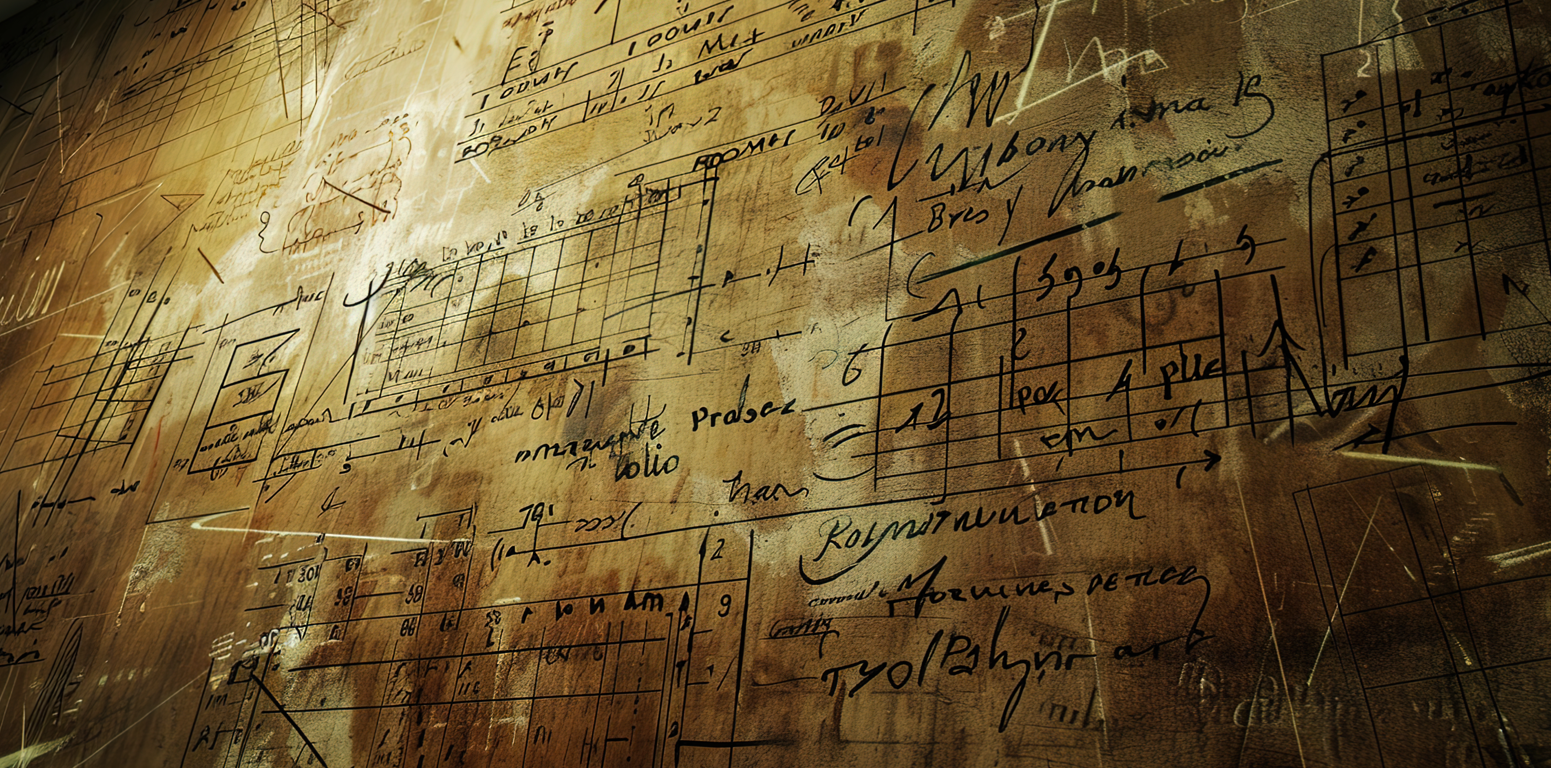Berlin, 07/10/2025
How Artificial Intelligence Went from Dream to Daily Reality
Could you imagine telling someone 75 years ago that soon their pocket would have a small device that holds more power than their whole town? A device that could recognize their voice, recommend meal recipes, and predict their needs? This would be considered science fiction back then, but today it is our everyday life.
The story of artificial intelligence and its origins is not that recent; it spans from theoretical computing machines to AI’s presence in every device. This history includes years of mathematical breakthroughs, cycles, and technological evolution.
Geniuses at the Foundation
The greatest minds in history have established the mathematical foundation for modern artificial intelligence. Galileo Galilei (1564-1642) was a pioneer in the scientific method; he insisted that “the book of nature was written in the language of mathematics” (Britannica, 2025). Galileo ideated in modern times the relationship between math, theoretical physics, and experimental physics, leading to a better understanding of mathematical laws.
Isaac Newton's (1643-1727) Philosophiæ Naturalis Principia Mathematica (1687) was also a precursor of current systems; he established the template for systematic mathematical reasoning that AI would later require. The Principia set forth fundamental laws of motion and universal gravitation using mathematical methods now included in calculus, expressing them as geometric propositions about "vanishingly small" shapes.
Albert Einstein's contributions to mathematical physics, particularly his work on Brownian motion and differential geometry, provided crucial groundwork for modern computational approaches. Einstein was aware of early computers and would likely have been interested in their potential applications in physics and mathematical modeling (Britannica, 2025).
The Computational Foundation (1940s-1950s)
The earliest work in artificial intelligence was done in the mid-20th century by British logician and computer pioneer Alan Turing. In 1935 Turing described an abstract computing machine consisting of a limitless memory and a scanner that moves back and forth through memory (Copeland, 2025).
In 1950, Turing posed the fundamental question: "Can machines think?". He laid out the Turing Test, or imitation game, to determine whether a machine is capable of thinking.
The term "artificial intelligence" was coined in 1956 during the Dartmouth Summer Research Project organized by John McCarthy. This workshop officially launched AI as a field, with attendees including McCarthy, Claude Shannon, and Marvin Minsky becoming the founding fathers of AI research.
Early Progress and First Limitations (1960s-1970s)
Arthur Samuel developed a computer program in 1952 that improved its performance at checkers over time, pioneering the concept of machine learning. Early AI programs demonstrated pattern recognition and problem-solving capabilities that initially appeared promising.
However, practical limitations emerged quickly. Most early systems failed when applied to broader or more difficult problems because they knew nothing of their subject matter, but rather succeeded using simple syntactic manipulations.
The first AI winter occurred from 1974-1980, triggered by the Lighthill Report in 1973, which gave a pessimistic forecast on AI’s field, provoking a defunding of programs.
Expert Systems Era (1980s)
In the 1980s, a form of AI program called "expert systems" was adopted by corporations around the world. The first commercial expert system was XCON, developed at Carnegie Mellon for Digital Equipment Corporation, and was estimated to have saved the company 40 million dollars over six years.
Corporations around the world began developing and deploying expert systems, and by 1985 they were spending over a billion dollars on AI, most of it to in-house AI departments. An entire industry emerged, including specialized hardware companies that built LISP machines optimized for AI research.
The second AI winter began in 1987 when desktops from Apple and IBM became more powerful than the more expensive machines, and an entire industry was demolished overnight.
Neural Network Revival (1990s-2000s)
The breakthrough came in 1986, when Geoffrey Hinton, David Rumelhart, and Ronald Williams popularized backpropagation, which allowed neural networks to be trained more effectively. This was a turning point for machine learning.
During this period, AI had solved many difficult problems and their solutions proved useful throughout the technology industry, such as data mining, industrial robotics, logistics, speech recognition, banking software, medical diagnosis and Google's search engine. These applications succeeded without being labeled as "AI."
The Modern AI Revolution (2010s-Present)
In 2012, AlexNet, a deep convolutional neural network, won the ImageNet challenge, dramatically outperforming others in computer vision. This catalyzed interest in deep neural networks and accelerated progress in areas like natural language processing and autonomous systems.
From 2006 onwards, companies such as Twitter, Facebook, and Netflix started utilizing AI as part of their advertising and user experience algorithms. The technology has become ubiquitous in smartphones, enabling voice recognition, image processing, and predictive text.
Current State and Business Applications
Machine Learning and Artificial Intelligence are enabling extraordinary scientific breakthroughs in fields ranging from protein folding, natural language processing, drug synthesis, and recommender systems to the discovery of novel engineering materials (NSF, 2024).
Three insights emerge from AI's historical trajectory:
- Narrow Focus Succeeds: AI applications that solve specific, well-defined problems consistently outperform those attempting general intelligence.
- Mathematical and Scientific Rigor Matters: Current AI achievements lie at the confluence of mathematics, statistics, engineering, and computer science, yet a clear explanation of the remarkable power and limitations of such AI systems has eluded scientists from all disciplines.
At Backwell Tech, we apply these historical lessons by focusing on predictive AI solutions with explainable outputs for different business applications: customer retention, price sensitivity, and demand forecasting. Our approach reflects AI's evolution from speculative technology to practical enterprise tool, one that augments human decision-making rather than replacing it.
The journey from Galileo’s mathematical foundations, trough Turing's theoretical machines and arriving to today's predictive analytics demonstrates that AI's value lies not in replicating human intelligence, but in solving human problems with mathematical precision and transparent reasoning.
About Backwell Tech
Backwell Tech is a Berlin-based high-tech company specializing in predictive AI solutions. The platform offers companies scalable AI models for profit maximization by utilizing historical and real-time data and ensuring data integrity. Since its founding in 2019, Backwell Tech has combined cutting-edge research with practical innovation in explainable algorithms. The company focuses on ethical AI development and delivers reliable, interpretable forecasts that enable informed business decisions. More information at www.backwelltechcorp.com.
Backwell Tech Corp contact:
Maximilian Gismondi
hello@backwelltechcorp.com
Sources:
- Copeland, B. (2025). Alan Turing. Encyclopedia Britannica. https://www.britannica.com/biography/Alan-Turing
- Copeland, B. (2025). History of artificial intelligence. Encyclopedia Britannica. https://www.britannica.com/science/history-of-artificial-intelligence
- History of Data Science. (2021). AI winter: The highs and lows of artificial intelligence. https://www.historyofdatascience.com/ai-winter-the-highs-and-lows-of-artificial-intelligence/
- IBM. (2025). The history of artificial intelligence. IBM Think Topics. https://www.ibm.com/think/topics/history-of-artificial-intelligence
- NSF. (2024). Mathematical foundations of artificial intelligence. National Science Foundation. https://www.nsf.gov/funding/opportunities/mfai-mathematical-foundations-artificial-intelligence
- Van Helden, A. (2025). Galileo. Britannica. https://www.britannica.com/biography/Galileo-Galilei
- Kaku, M. (2025). Albert Einstein. Britannica. https://www.britannica.com/biography/Albert-Einstein
- Westfall, R. (2025). Isaac Newton. Britannica. https://www.britannica.com/biography/Isaac-Newton
- Tableau. (2025). What is the history of artificial intelligence? Tableau Data Insights. https://www.tableau.com/data-insights/ai/history
- TechTarget. (2025). 8 AI and machine learning trends to watch in 2025. https://www.techtarget.com/searchenterpriseai/tip/9-top-AI-and-machine-learning-trends
- Havenstein, H. (2005). Spring comes to AI winter. ComputerWorld. https://www.computerworld.com/article/1720304/spring-comes-to-ai-winter.html






